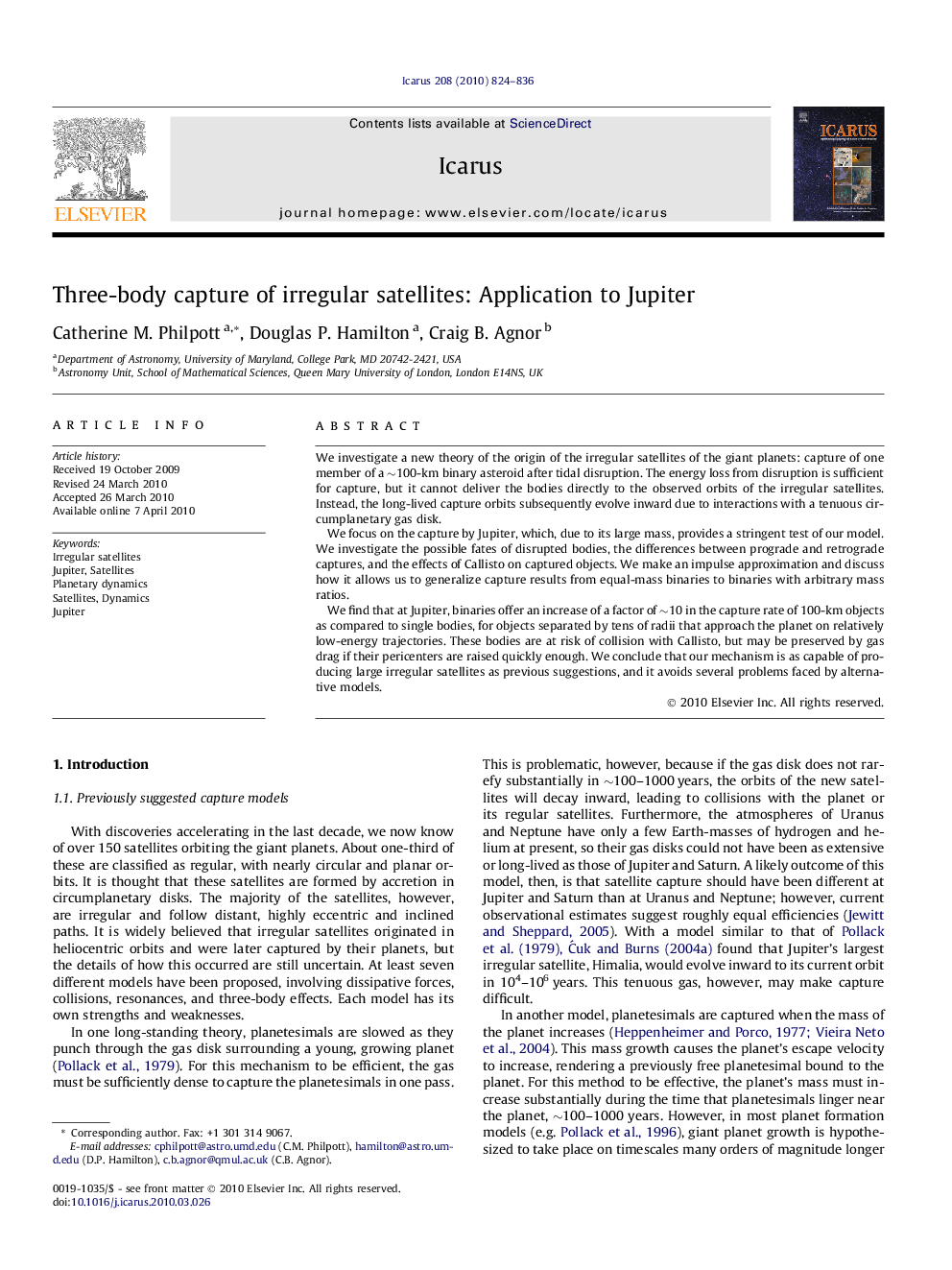| Article ID | Journal | Published Year | Pages | File Type |
|---|---|---|---|---|
| 1774083 | Icarus | 2010 | 13 Pages |
We investigate a new theory of the origin of the irregular satellites of the giant planets: capture of one member of a ∼100-km binary asteroid after tidal disruption. The energy loss from disruption is sufficient for capture, but it cannot deliver the bodies directly to the observed orbits of the irregular satellites. Instead, the long-lived capture orbits subsequently evolve inward due to interactions with a tenuous circumplanetary gas disk.We focus on the capture by Jupiter, which, due to its large mass, provides a stringent test of our model. We investigate the possible fates of disrupted bodies, the differences between prograde and retrograde captures, and the effects of Callisto on captured objects. We make an impulse approximation and discuss how it allows us to generalize capture results from equal-mass binaries to binaries with arbitrary mass ratios.We find that at Jupiter, binaries offer an increase of a factor of ∼10 in the capture rate of 100-km objects as compared to single bodies, for objects separated by tens of radii that approach the planet on relatively low-energy trajectories. These bodies are at risk of collision with Callisto, but may be preserved by gas drag if their pericenters are raised quickly enough. We conclude that our mechanism is as capable of producing large irregular satellites as previous suggestions, and it avoids several problems faced by alternative models.
